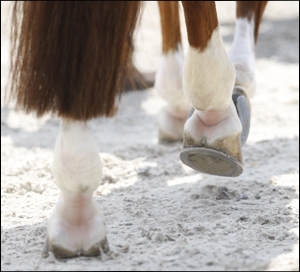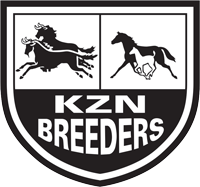| Lameness Evaluation And Diagnostics 26 April, 2012 – Dr John Hodsdon |
General lameness evaluation hasn’t changed over the last 100 years, it still requires a thorough and methodical approach with careful palpation and observation being the essence.
Modern improvement has come through diagnostic analgesia and imaging which has expanded treatment options. This has allowed us to focus on tailor made treatment protocols, which speeds up recovery and minimizes re-occurrence.
Lameness isn’t a disease but a clinical sign of inflammation, pain or mechanical defect, which results in a horse being incapable of normal locomotion with a deviation of normal gait. The aim of a lameness workup is to localize, characterize and then treat and manage the underlying disease processes.
Localization of the exact source of pain can sometimes be difficult as numerous causes of lameness show the same gait deficits. This is when a lameness workup becomes essential, remember a workup can range from basic to complex, and the majority of them are relatively basic if the source of pain is identified with a few manipulative tests.
Most vets approach a lameness workup in a similar way, usually following this protocol:
- History
- Clinical Observation
- Palpation
- Physical Examination
- Movement
- Manipulative Test
- Diagnostic Analgesia
- Imaging
- Diagnosis
- Treatment
The history gives us a base to start from as different breeds and disciplines are predisposed to different types of lameness. The history for example duration, deterioration or improvement and the effect of work, and other routine management (shoeing/training/intensity/surface/diet) assist us in determining the most likely cause of lameness.
When the horse is observed from a distance we are evaluating conformation, posture and symmetry. Conformation is a good warning sign as it determines the way a horse moves therefore affecting the longevity of a horse preforming certain disciplines. Certain postures can be associated with certain conditions (for example a rocking horse stance of a horse with laminitis) thus allowing us to focus on specific sites. When looking at forelimb and hind limb symmetry things like muscle atrophy, swelling, foot size, fetlock height and bony swelling are observed to highlight certain areas where possible pathology can be present.
Palpation is still one of the most important tools in a lameness workup. Everything needs to be pushed, prodded and felt, so that signs of inflammation (heat/pain/redness/swelling) can be detected. Generally a systematic approach is taken working from the fore limbs to the hind limbs, covering the entire length of the horse, placing lots of emphasis on the distal limbs.
Once the above mentioned examinations are performed we then focus on the movement or gait. Starting by evaluating the horse at walk and trot on a firm level surface. The most useful gait to examine lameness is the trot, as this normally relates well with lameness seen in the other natural gaits. This is to pick up the primary or baseline lameness, and to see if one or more limbs are involved. This lameness is classified and graded to give us a concrete starting point from which we can evaluated the effects of different manipulative tests. The horse is examined trotting away from and towards the examiner and then from the side. What we are looking for is the head nod for forelimb lameness. (The head lifts on placement of the unsound fore limb).
For hind limbs we are looking for a pelvic hike or fetlock drop, (the affected hind limb appears to have a greater degree of movement in the vertical plane). We also evaluate the limb in flight from the side as the lame limb will have a shortened cranial phase from lack of propulsion.

Once baseline lameness is established the horse is often evaluated on a soft surface and possibly lunged or ridden to see how that affects the lameness. Thereafter further manipulative tests can be performed to see if they exacerbate the lameness. The common manipulative tests are flexion tests, direct digital compression or the wedge test. On evaluating these tests the initial few strides are ignored and if they have exacerbated the lameness after the first 3-5 strides then they are classified as a positive. These tests are however never specific to one joint (except possibly the carpal flexion test) so they must be interpreted with the other clinical findings.
Diagnostic analgesia (nerve blocks) are then performed either to confirm a suspected cause of lameness or to localize the source of lameness. In general you get regional nerve blocks and specific nerve blocks, the regional blocks tend to block out a specific region of the limb and the specific blocks tend to involve specific joints or nerves, ie hock joint or lateral palmer block for suspensory ligaments. As the nerves run distally you have to start at the hoof and work your way up.
Nerve blocks have added a new sphere to lameness diagnosis as they can confirm if a suspected abnormality is causing the lameness, so allowing the diagnostic imaging/treatment to be focused to that specific area. The aim of diagnostic analgesia is to abolish or vastly improve lameness by 70-80%.
Once we have found the specific site that is causing the lameness we then procede with diagnostic imaging, routinely radiography and ultrasonography, to evaluate the individual structures involved and form a definitive diagnosis.
Once the definitive diagnosis is made we then have all the information to make a rational treatment protocol.
Bosch Hoek Equine Hospital is a state of the art Equine hospital situated in the beautiful Kwa-Zulu Natal Midlands of South Africa. Our primary goal is to offer clients and their horses world class care and expertise for both surgical and medical conditions with a rehabilitation centre to match.
If you require our services or would like to discuss anything please call one of us on the numbers below:
Dr Helen Tiffin 082 966 9324
Dr Jenny Lawrence 082 836 9897
Dr Anna Bowker 082 849 3456 (away until August)
Dr John Hodsdon 072 165 7122
 Dr John Hodsdon Dr John HodsdonEquine Veterinarian BVSc John qualified at Onderstepoort in 2003 after which he headed over to the UK where he spent 8yrs in busy equine practices, predominantly in the Suffolk/Essex region. John has a keen interest in lameness, diagnostics and surgery. Being a former Maritzburg boy, he and his young family have now returned to KZN on a permanent basis. His UK equine experience has brought a new dynamic to the practice and complements the existing vets. When John is not busy with horses, he can be found being entertained by his 3 young daughters … who no doubt will be asking Daddy for a pony very soon! |


